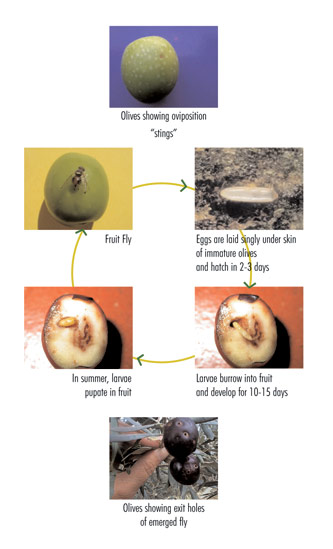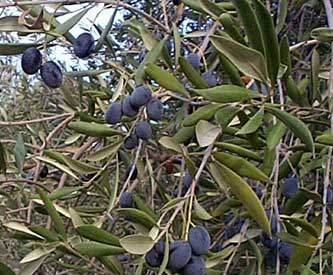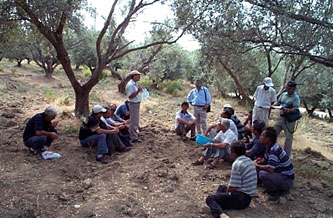Integrated Pest Management Package on Olive
What problems does it solve?
The Olive fruit fly Bactrocera olea Gmelin (Dipt.,Tephritidae) is one of the most dangerous insect pests of the olive agro-ecosystem. The insect can survive and develop in any area of the world where olive trees are grown. In the areas where the olive fruit fly is not controlled, it has been responsible for losses up to 80% of the oil value. For some varieties of table olives, this pest can even destroy the whole crop. It is estimated that the insect is responsible for 30-40% of the losses in the olive production of the Mediterranean region.
The Olive fruit fly is strictly monophagous and the gravid female lays her eggs inside the olive fruit. The resulting larvae feed digging tunnels through the mesocarp, which gets quickly infected with fungus. The affected olive fruit is unsuitable for processing and the quality of the resulting olive oil is sharply reduced. The adults, although active all year round if temperatures are suitable, are only of economic concern during the growth period of the olive fruit. Egg laying and damage normally commence in early summer although most of the damage occurs in the autumn when the fruit is maturing.
Olive Fruit Fly Life Cycle
• The Olive fruit fly overwinters as a pupa in the soil although a proportion of the population can emerge during the winter months.
• Most adults emerge in spring
• Eggs are laid singly under the skin of immature olives and hatch in 2-3 days
• Larvae burrow into fruit and develop for 10-15 days
• In summer, larvae pupate in fruit
• Life cycle in summer takes about 4 weeks
The control of olive fruit fly is usually based on the use of organophosphorus insecticides (bait and cover sprays).The continued use of such products has however been questioned in recent years especially by environmentalists. Pesticides residues have been detected in olive oil and in the environment where olives are grown. There is a strong tendency to replace these broad spectrum insecticides with methods or materials which are less destructive and deleterious to the environment and to human health. 
During the last decades, all the olive growing countries of the Mediterranean region have devoted great effort to developing alternative methods for the monitoring and control of the olive fruit fly by means of semiochemicals, both sex pheromones and food attractants. The researches conducted were also aimed at inserting these methods into the IPM package, together with other cultural practices (early olives harvesting) as a means to escape from the high infestation of the Bactrocera oleae.
Attempts to control olive fruit flies by luring them into killing devices were first made in Greece in the 60’s. McPhail traps, baited with a solution of hydrolyzed protein, were used to lure flies into them. Yellow sticky traps have also been used to attract the fly but, as emphasized by many authors, they can be detrimental to beneficial insects that also respond to the lure. Since the pheromones of the olive fruit fly were identified, pheromones traps have been developed and tested in Spain, Greece and Italy.
The introduction of semiochemicals-based products (sex pheromones and food attractants) and cultural practices, as control method in IPM packages of olive fruit fly control, has been very successful and has produced the most satisfying results in terms of efficacy, reduced crop losses, increased farmers’ income, reduced use of pesticides and reduced pesticides residues on olive products.
DOWNLOAD THE BROCHURE PDF
English (0.9 MB)Spanish (1.0 MB)








 COUNTRY OF ORIGIN
COUNTRY OF ORIGIN